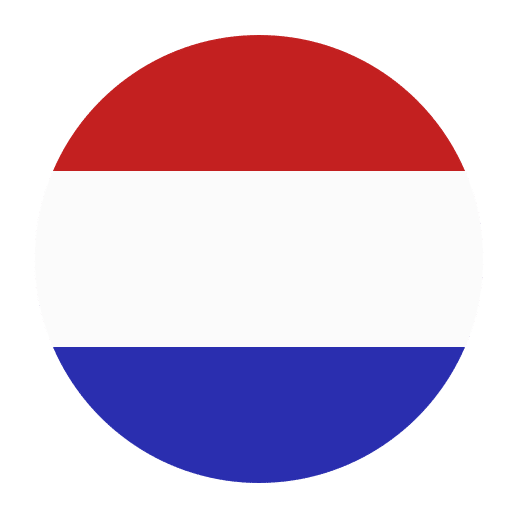Learning a new language is akin to embarking on a grand adventure. Each language has its unique set of rules, nuances, and structures that make it both challenging and rewarding. Dutch, the official language of the Netherlands, is no exception. One of the fundamental aspects of mastering Dutch is understanding and mastering verb conjugations. These linguistic tools are vital in forming coherent and accurate sentences, and they play a crucial role in effective communication. In this article, we will explore the significance of verb conjugations in Dutch, their structure, and their practical applications.
The Foundation of Verb Conjugations
Verb conjugations are the modifications that verbs undergo to express different tenses, moods, voices, numbers, and persons. In Dutch, as in many other languages, verb conjugations are essential for conveying the correct meaning and ensuring that sentences are grammatically sound. By altering the form of a verb, speakers can indicate when an action takes place, who is performing the action, and other contextual details.
Dutch verbs can be divided into three main categories: regular verbs, irregular verbs, and modal verbs. Each category has its own set of conjugation rules and patterns, making it crucial for learners to familiarize themselves with these variations.
Regular Verbs
Regular verbs in Dutch follow a predictable pattern, making them relatively easy to learn and conjugate. To conjugate a regular verb, one must identify the verb’s stem and then add the appropriate endings based on the subject and tense.
For instance, consider the regular verb “werken” (to work). The stem of “werken” is “werk.” Here is how “werken” is conjugated in the present tense:
– Ik werk (I work)
– Jij/Je werkt (You work)
– Hij/Zij/Het werkt (He/She/It works)
– Wij/We werken (We work)
– Jullie werken (You all work)
– Zij/Ze werken (They work)
As seen above, the endings “-t” and “-en” are added to the stem “werk” to form the present tense conjugations. Regular verbs maintain this consistent pattern across different tenses, making them easier to remember and use.
Irregular Verbs
Irregular verbs, on the other hand, do not follow a consistent pattern and require more memorization. These verbs often undergo significant changes in their stems or endings, making them more challenging for learners. However, irregular verbs are common in everyday language, so mastering them is essential for fluency.
An example of an irregular verb is “zijn” (to be). Here is how “zijn” is conjugated in the present tense:
– Ik ben (I am)
– Jij/Je bent (You are)
– Hij/Zij/Het is (He/She/It is)
– Wij/We zijn (We are)
– Jullie zijn (You all are)
– Zij/Ze zijn (They are)
As shown, “zijn” undergoes a complete transformation in its conjugation, deviating from any regular pattern. Memorizing irregular verbs requires practice and exposure to the language in various contexts.
Modal Verbs
Modal verbs are a subset of irregular verbs that express necessity, possibility, permission, or ability. In Dutch, the common modal verbs include “kunnen” (can), “mogen” (may), “moeten” (must), “willen” (want), and “zullen” (shall/will). Modal verbs are typically followed by an infinitive verb and influence its meaning.
For example, let’s consider the modal verb “kunnen” (can):
– Ik kan (I can)
– Jij/Je kan/kunt (You can)
– Hij/Zij/Het kan (He/She/It can)
– Wij/We kunnen (We can)
– Jullie kunnen (You all can)
– Zij/Ze kunnen (They can)
Modal verbs are crucial for expressing various degrees of necessity and possibility, adding depth and nuance to communication.
The Importance of Tense
Understanding verb conjugations in Dutch is not just about learning different forms of verbs; it is also about mastering the concept of tense. Tense allows speakers to place actions in time, whether they occur in the past, present, or future. Dutch, like English, has several tenses that are essential for accurate communication.
Present Tense
The present tense is used to describe actions that are currently happening or habitual actions. Regular verbs in the present tense follow the pattern mentioned earlier, while irregular and modal verbs have their unique forms. Mastering the present tense is the foundation for learning other tenses, as it provides a basis for understanding verb conjugations.
Past Tense
The past tense in Dutch is divided into two forms: the simple past (onvoltooid verleden tijd) and the past perfect (voltooid verleden tijd). The simple past is used for actions that were completed in the past, while the past perfect describes actions that were completed before another past action.
For regular verbs, the simple past is formed by adding “-te” or “-de” to the stem, depending on the final consonant. For example, the verb “werken” (to work) in the simple past is “werkte.”
– Ik werkte (I worked)
– Jij/Je werkte (You worked)
– Hij/Zij/Het werkte (He/She/It worked)
– Wij/We werkten (We worked)
– Jullie werkten (You all worked)
– Zij/Ze werkten (They worked)
Irregular verbs have unique forms in the past tense, and these must be memorized. For example, the past tense of “zijn” (to be) is “was” and “waren.”
– Ik was (I was)
– Jij/Je was (You were)
– Hij/Zij/Het was (He/She/It was)
– Wij/We waren (We were)
– Jullie waren (You all were)
– Zij/Ze waren (They were)
The past perfect tense is formed using the auxiliary verb “hebben” (to have) or “zijn” (to be) in the present tense, followed by the past participle of the main verb. For example, the past perfect of “werken” (to work) is “heb gewerkt.”
– Ik heb gewerkt (I have worked)
– Jij/Je hebt gewerkt (You have worked)
– Hij/Zij/Het heeft gewerkt (He/She/It has worked)
– Wij/We hebben gewerkt (We have worked)
– Jullie hebben gewerkt (You all have worked)
– Zij/Ze hebben gewerkt (They have worked)
Future Tense
The future tense in Dutch is formed using the auxiliary verb “zullen” (shall/will) followed by the infinitive form of the main verb. For example, the future tense of “werken” (to work) is “zal werken.”
– Ik zal werken (I will work)
– Jij/Je zult werken (You will work)
– Hij/Zij/Het zal werken (He/She/It will work)
– Wij/We zullen werken (We will work)
– Jullie zullen werken (You all will work)
– Zij/Ze zullen werken (They will work)
The future tense allows speakers to talk about actions that will occur at a later time, adding a temporal dimension to their communication.
Practical Applications of Verb Conjugations
Understanding and mastering verb conjugations in Dutch is not just an academic exercise; it has practical applications in everyday communication. Here are some scenarios where verb conjugations play a crucial role:
Everyday Conversations
In daily interactions, using the correct verb conjugation is essential for clear communication. Whether you are asking for directions, ordering food, or discussing plans, accurate verb conjugation ensures that your message is understood.
For example, consider a simple conversation at a restaurant:
– “Ik wil een koffie, alstublieft.” (I want a coffee, please.)
– “Wilt u suiker in uw koffie?” (Do you want sugar in your coffee?)
– “Nee, ik drink mijn koffie zwart.” (No, I drink my coffee black.)
In this exchange, the correct conjugation of “willen” (to want) and “drinken” (to drink) is crucial for conveying the speaker’s preferences.
Formal Communication
In formal settings, such as business meetings, academic presentations, or official correspondence, using proper verb conjugations is essential for maintaining professionalism and clarity. Incorrect verb forms can lead to misunderstandings and may reflect poorly on the speaker.
For instance, in a business presentation:
– “Wij hebben de resultaten van het onderzoek geanalyseerd.” (We have analyzed the results of the research.)
– “Dit project zal de efficiëntie van ons bedrijf verbeteren.” (This project will improve the efficiency of our company.)
Using the correct past perfect and future tense conjugations demonstrates a command of the language and enhances the speaker’s credibility.
Written Communication
Written communication, whether in emails, reports, or essays, requires precise verb conjugations to ensure clarity and coherence. Inaccurate verb forms can confuse readers and detract from the overall message.
Consider an email to a colleague:
– “Ik heb de documenten gisteren verstuurd.” (I sent the documents yesterday.)
– “Kun je bevestigen dat je ze hebt ontvangen?” (Can you confirm that you have received them?)
In this context, using the correct past tense and past perfect tense conjugations is crucial for conveying the sequence of events accurately.
Strategies for Mastering Verb Conjugations
Given the importance of verb conjugations in Dutch, language learners must develop effective strategies for mastering them. Here are some tips to help you on your journey:
Practice Regularly
Consistent practice is key to mastering verb conjugations. Set aside dedicated time each day to practice conjugating verbs in different tenses and contexts. Use flashcards, language apps, or online exercises to reinforce your skills.
Immerse Yourself in the Language
Immersion is one of the most effective ways to learn a language. Surround yourself with Dutch by listening to podcasts, watching Dutch TV shows or movies, and reading Dutch books or articles. Exposure to the language in various contexts will help reinforce verb conjugations and improve your overall proficiency.
Use Mnemonics and Memory Aids
Mnemonics and memory aids can be helpful for memorizing irregular verb forms. Create associations or visualizations that help you remember the unique conjugations of irregular verbs. For example, you might associate the verb “zijn” (to be) with the image of a bee (“is” sounds like “bee”) to remember that “is” is the conjugation for “he/she/it is.”
Practice Speaking with Native Speakers
Engaging in conversations with native Dutch speakers is an excellent way to practice verb conjugations in real-life situations. Join language exchange programs, attend language meetups, or find conversation partners online. Speaking with native speakers will help you become more comfortable using verb conjugations in context and improve your overall fluency.
Seek Feedback and Corrections
Don’t be afraid to seek feedback and corrections from native speakers or language instructors. Constructive feedback will help you identify areas for improvement and refine your verb conjugation skills. Embrace mistakes as learning opportunities and use them to enhance your language proficiency.
Conclusion
Verb conjugations are the backbone of the Dutch language, enabling speakers to convey precise meanings, express temporal relationships, and engage in effective communication. While mastering verb conjugations may seem daunting at first, consistent practice, immersion, and a strategic approach can help learners overcome this challenge. By understanding the significance of verb conjugations and dedicating time to mastering them, language learners can unlock the full potential of Dutch and embark on a rewarding linguistic journey. So, dive into the world of Dutch verb conjugations, and watch your language skills flourish!

